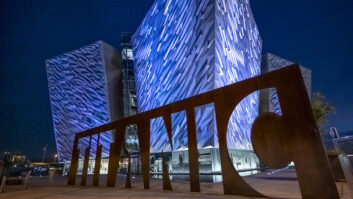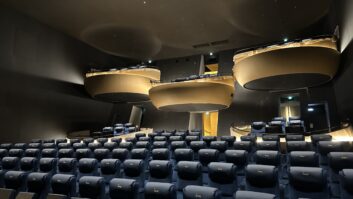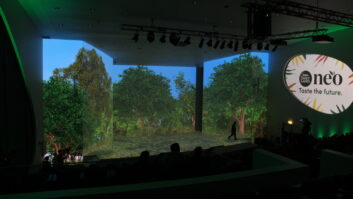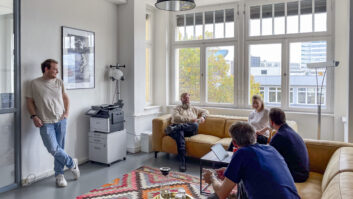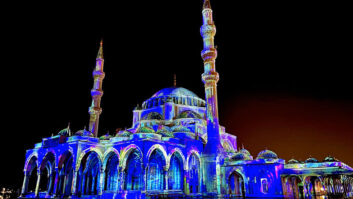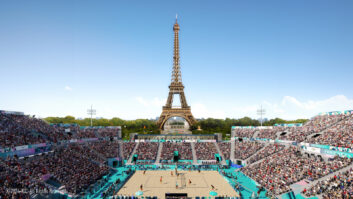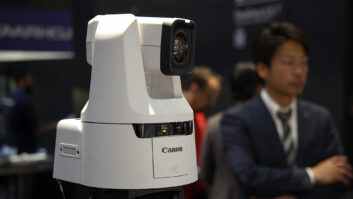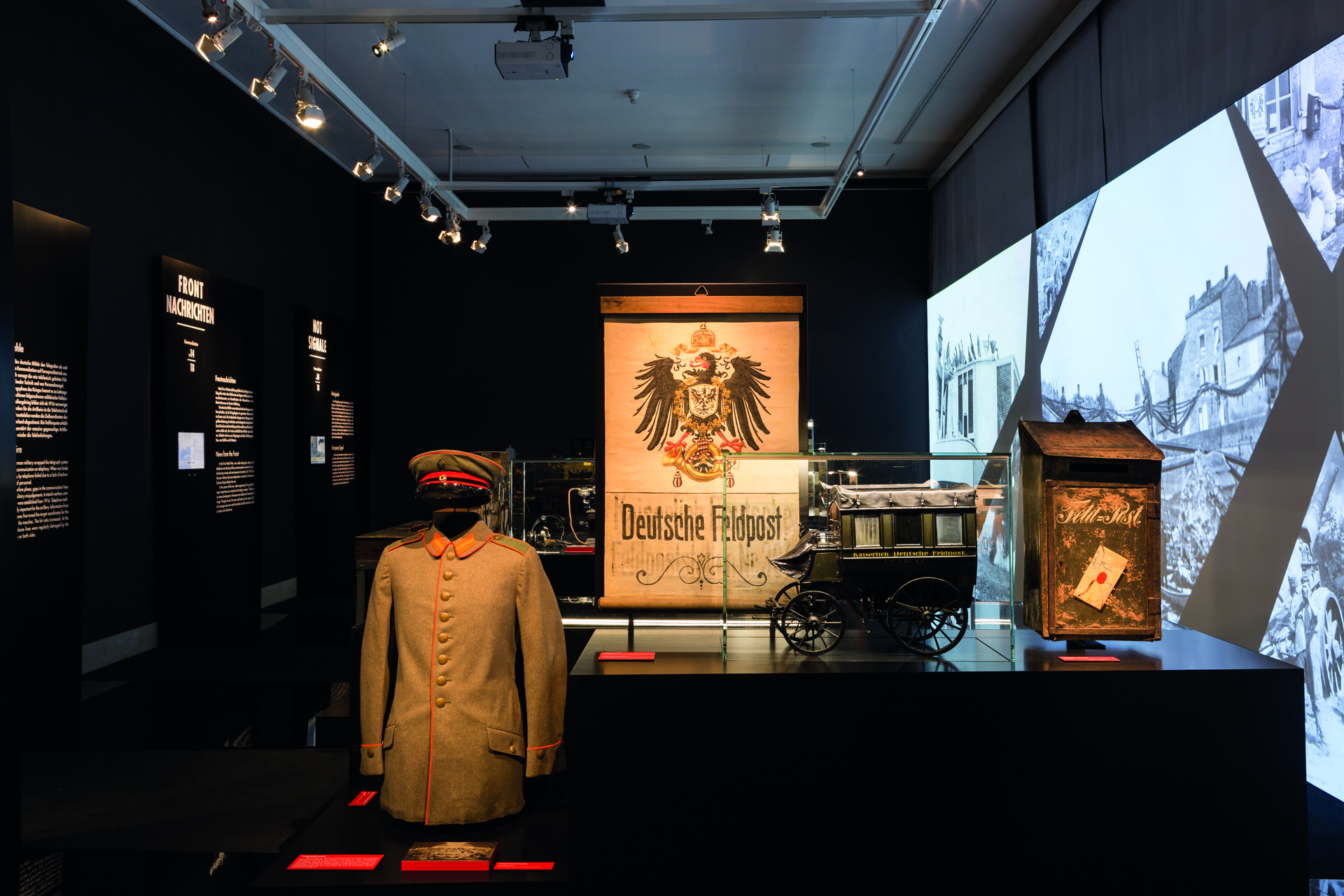
The designers of an exhibition exploring communication in the First World War struggled to find the right projection solution for the cramped space. Paddy Baker reports
Considered to be the oldest museum of its kind in the world, the Museum für Kommunication Berlin (MKB) was founded as a postal museum in 1872. Its permanent exhibits explore the history of all communication, including tools of the written word, such as wax seals, postcards and stamps, as well as tools of the spoken and visual worlds, including early telephones and radios.
Last year saw the opening of the ‘Networks of War’ exhibition at MKB, showing the use of a communication facility in the First World War. As part of this exhibit, traditional displays are enhanced with changing projected images.
The exhibition was conceived in 2013 to mark the centenary of the war the following year, and show the techniques that were used for field communications during the conflict. “We have an extensive collection of pictures that we wanted to show next to exhibits such as field post letters, telephones and radios,” says Dr Oliver Goetze, head of public relations at the MKB.
Mesh of pictures
The MKB worked with Cologne-based agency res d on the exhibition design. Christoph Hülle of res d explains the visual concept: “It’s like a mesh of telephone lines that you might find in Verdun or anywhere in the world. Our idea was to take this idea and bring a multivisual mesh filled with pictures from that scenario to one big wall.”
However, the exhibition is located in a fairly small room, just 100sqm in area, “so the question was whether it would be possible to get such a big image on one side of the room with very short distances to realise the projection,” says Hülle.
Three projectors would be needed to create a combined image 14m wide and 3m high. “We were seeking a device that was capable of projecting from a short distance of 2m and we were also looking to install the projector just below ceiling level. The aim was to create a 5.6m projection; however, many of the projectors that we tested were not able to produce high-quality images at this scale,” said Goetze.
Hülle explains: “We tested three different brands of short-throw projector – two that feature a built-in mirror [in front of the lens] one with a standard optic. The problem with the two models with mirrors was that because the mirror is curved, the edges of the projection became curved as the projector was moved further from the projection wall [to increase the image size].”
On top of this, there was the added complication that the rest of the room for the exhibition was to be kept rather dark, with individual objects on display illuminated – there could be no light spill from the projector intruding onto the exhibits.
Shortly before the exhibition opened, a suitable projector had not been found. res d called a personal contact at Canon, who suggested the XEED projector range. “The XEED WUX400ST had recently been launched, but was not yet available in Germany. We received the model for testing in March 2014 and it took hardly any time at all to convince the curator that this device fit our needs,” said Goetze.
“In our tests there was a big difference between the projectors, and the Canon had all the features that we wanted to have,” says Ingo Plato, architect and co-owner of res d. “The Canon’s lens makes it possible to have a very wide image with a short projecting distance; another important feature is that there is a huge lens shift in the vertical direction. This helps us to mount the projectors high up and avoid shining the beam onto the exhibits or the visitors.”
Because the projector model was so new, it was not immediately certain that three devices would be available for use at the exhibition launch. Fortunately, thanks to successful collaboration between the MKB, Canon, res d and authorised dealer Beamerpartner24, the first three XEED WUX400ST projectors in Germany were secured for the exhibition a week before it opened. Had they not become available, the fallback plan was to show static images with other projectors.
Combinations
The WUXGA projectors display 51 photos in varying orders and combinations, merging regularly to create a single image that covers the projection wall. The individual images have been cut in Adobe AfterEffects to fit the grid design. They are served to each projector by a dedicated Heddier FP-PRO HD media player, and the three are synchronised by a Heddier Sync-Board (already in the museum’s AV inventory) over an RS-485 connection.
The Canon projectors have integrated edge-blending capabilities, but to avoid complication it was decided to design the projection so that black borders separate the different elements of the combined picture – so the images from the projectors are overlaid without overlapping, and edge blending is not required.
The projection surface was manufactured by exhibition services company D4 Projekt using a beitex 310g/sqm canvas.
As well as being able to meet the geometrical requirements of the installation, the Canon projectors also outperformed the other tested models on picture quality, says Plato: “We always try to find projectors where black is really black. That was important here and the Canon projectors have good quality in this regard. In this case, we used the projectors for black and white pictures, but we would also like to use them for colour pictures in the future.”
In March 2015 the exhibition moved to a museum in Frankfurt, using the same equipment, and res d was involved in setting up the system there.
The museum bought the projectors outright. Hülle explains: “Our advice was to buy them because of the opportunity to have a very high vertical shift, also horizontal shift, a good price – these are all factors [that mean that] other companies working in exhibition design will be able to integrate these kinds of projectors very easily in their designs, so this model is a good investment for the future.”
For more on the Canon projectors used
To find out about the Museum für Kommunication Berlin
For more about the res d agency
www.heddier.com
